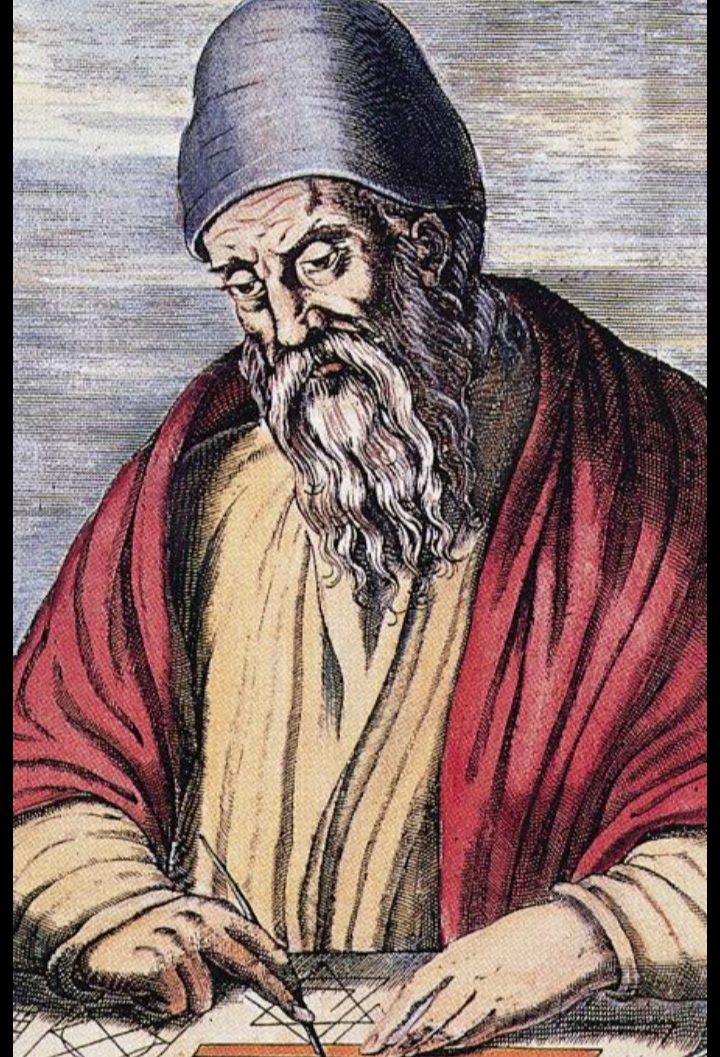Father of Geometry
Euclid
He was born in mid 4th century BC. Euclid was given a name Euclid of Alexandria to distinguish him from Euclides of Magara who was a Greek mathematician.
Euclid’s works were most popular in the history of mathematics. Until the late 19th century, his writings were used in mathematics textbooks. Most famous Euclidian geometry is solved by deducting Euclid theorems.
There is a lot about Euclid’s life that is a mystery, including exact dates of his birth and death, and in many historical accounts he is simply referred to as ‘the author of Elements’.Euclid is often referred to as “father of geometry “and his book elements was used well into the 20th century as the standard textbook for teaching geometry.
There are at least six major works attributed to Euclid. Most of them deal with mathematical formulas, but also delve into things like the math of mirrors and reflections, astronomy, and optical illusions.
Elements
Euclid’s accomplishments helped to present elements in a single,As producer of the ‘Elements’, his most prominent work, Euclid became the leading mathematician and teacher of all time. The book comprises thirteen volumes of geometry books. Consisting of the most useful geometrical theory and mathematical proofs which have maintained their significance till the present day, this book also has information on the number theory, infinitude of prime numbers, Euclid’s lemma and theory of proportions.The basic structure of the elements begins with Euclid establishing axioms, the starting point from which he developed 465 propositions, progressing from his first established principles to the unknown in a series of steps ,he called this process as ‘Synthetic Approach.’ He looked at mathematics as a whole, but was concentrated on geometry and that particular discipline formed the basis of his work. In 1482 Elements was published which was translated in arabic and latin , although the English version was printed in 1570.His geometrical works have made way for modern mathematical theory and also indirectly facilitating the field of astronomy and engineering.
Axioms
Euclid’s approach is based upon 10 axioms, statements that could be accepted as truths. He called these axioms his ‘postulates’ and divided them into two groups of five, the first set common to all mathematics, the second was specified to geometry. Some of these postulates seem to be self-explanatory to us, but Euclid operated upon the principle that no axiom could be accepted without proof.
Fragments
In the second book of Elements of Euclid, the Papyrus Oxyrhynchus is a fragment. This fragment was unearthed by Grenfell and Hunt in 1897. T.L.Heath classically translated this as follows :
” If a straight line is to be cut into equal and unequal segments, then the rectangle contained by the unequal segments of the whole together with the square on the straight line between the points of the section needs to be equal to the other half. ”
Use of geometry
Geometry is usually needed to be considered as a branch of Mathematics. It is so because it added lots of beauty to mathematics. It concerns with the questions of shape, size, the relative position of figures, and the properties of space.
Other works of Euclid
Euclid has worked in many other areas of geometry such as,
Data
Phaenomena
Optics and parisms
Catoptrics
Conics
Geometer
Geometer is a person who works in the field of Geometry. Geometry exists from the early days which are helpful for calculating lengths, areas, and volumes. Some of the generalized concepts have evolved which are more or less similar to geometry. These include points, lines, surfaces, angles, and curves. Geometry concepts are applicable not in mathematics but also in art, architecture, as well as for other branches of mathematics too. Contemporary includes many subfields. Some of them are as follows :
Euclidean Geometry
Differential Geometry
Topology
Convex Geometry
Algebraic Geometry
Discrete geometry
Computational Geometry

